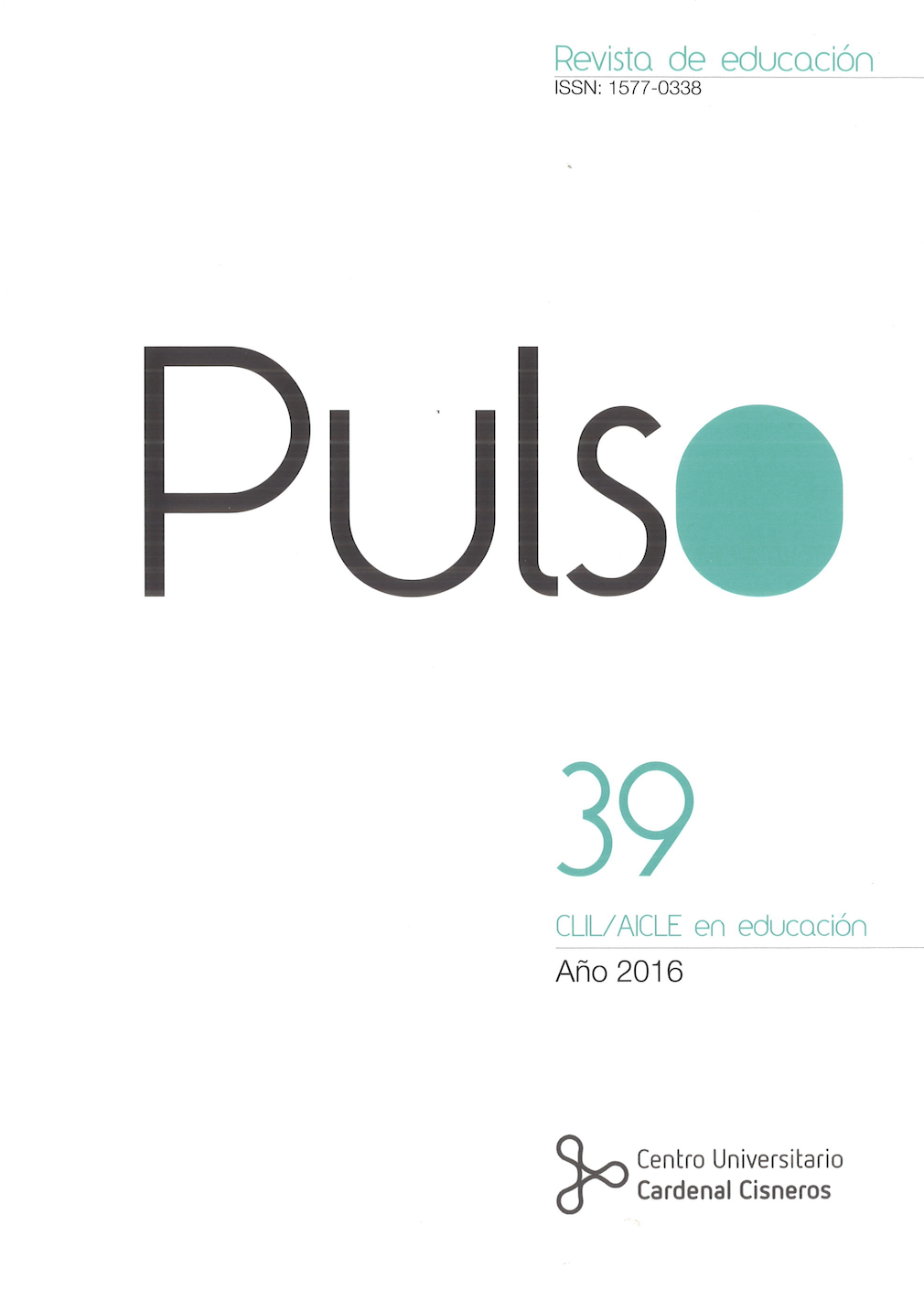Aprendizaje inverso y motivación en el aula universitaria
DOI:
https://doi.org/10.58265/pulso.5093Palabras clave:
Aula Inversa, Aprendizaje Inverso, Just-In-Time Teaching, Motivación y Alumnado UniversitarioResumen
En el aula inversa, se espera que los estudiantes vengan a clase preparados para aprender. En concreto, la primera exposición a los contenidos básicos a los que el estudiante se enfrenta ocurre antes de la clase y, durante la misma, se crean dinámicas donde las ponga en práctica. Esta investigación tiene como objetivo explorar los beneficios de una metodología inversa (Just-in-Time Teaching) con estudiantes universitarios. De manera más específica, se pretende investigar si Just-in-Time Teaching acelera el aprendizaje y, a su vez, mantiene al estudiante motivado. A través de dos grupos de estudiantes universitarios, se ha intentado llevar a cabo un análisis sistemático de naturaleza cualitativa y cuantitativa que pretende dar cuenta de este doble objetivo. El análisis pone de manifiesto que en Just-in-Time Teaching no solo se involucran más en su propio aprendizaje, sino que, además, aprenden de manera más efectiva.
Descargas
Citas
Al-Mahrooqi R.; Shahid A. y Cofie C. (2012). Analyzing the Use of Motivational Strategies by EFL Teachers in Oman. Malaysian Journal of ELT Research, 8(1), 36-72.
Anderman E. M. y Anderman L. H. (2010). Classroom Motivation. Upper Saddle River, NJ: Merrill.
Angelo, T. A. y Cross, P. K. (1993). Classroom Assessment Techniques: A Handbook for College Teachers (Second ed.). San Francisco, CA: Jossey-Bass.
Bahous, R.; Bacha, N, y Nabhani. M (2011). Motivating students in the EFL classroom: A case study of perspectives. English language teaching, 4 (3) (2011), p. 39
Beck, R. C. (2004). Motivation: Theories and principles. Upper Saddle River, N.J.: Pearson Education.
Bergmann, J. y Sams A. (2012). Flip Your Classroom: Reach Every Student in Every Class Every Day and Flipped Learning: Gateway to Student Engagement. Virginia: ASCD.
Berrett, D. (2012). How ‘flipping’ the classroom can improve the traditional lecture. The Chronicle of Higher Education, Feb. 19, 2012 Retrieved from http://chronicle.com/ article/How-Flipping-the- Classroom/130857/
Bruff, D. (2013). Using Peer Instruction to Flip Your Classroom: Highlights from Eric Mazur’s Recent Visit. Blog post, Vanderbilt University Center for Teaching.
Chambers, G. N. (1999). Motivating language learners. Clevedon: Multilingual Matters.
Dörnyei, Z. y Otto, I. (1998). Motivation in action: A process model of L2 motivation. Working Papers in Applied Linguistics (London: Thames Valley University), 4: 43-69.
Dörnyei, Z. (2001). Teaching and Researching Motivation. England: Pearson Education Limited.
Dörnyei, Z. (2007). Creating a motivating classroom environment. In Cummins, J.C. (ed.) International Handbook of English Language Teaching: 219-231. New York: Springer.
Dörnyei, Z. y Csizér, K. (1998). Ten commandments for motivating language learners: results of an empirical study. Language Teaching Research 2 (3), 203-229.
Driscoll, T. (2012). Flipped Learning and democratic Education: The Complete Report. Retrieved from http:// www.flipped-history.com/2012/12/flipped-learning-democraticeducation.html.
Guertin, L. A. (2010). Using Just-in-Time Teaching in the Geosciences. In Just-in-Time Teaching: Across the Disciplines, Across the Academy. Simking, S y Maier. M (Eds.) Sterling, VA: Stylus Publishing.
Huba, M. E. y Freed, J. E. (2000). Learner-Centered Assessment on College Campuses: Shifting the Focus from Teaching to Learning. Needham Heights, MA: Allyn & Bacon.
Hrynchak, P. y Batty, H. (2012). The Educational Theory Basis of Team-based Learning. Medical Teacher, 34: 796-801.
Johnson, D. W.; Johnson, R. T. y Smith, K. A. (1991). Active Learning: Cooperation in the College Classroom. Edina, MN: Interaction Book Company.
Johnston, S. y Cooper, J. (1997). Quick-thinks: Active-thinking Tasks in Lecture Classes and Televised Instruction. Cooperative Learning and College Teaching, 8(1), 2-7.
Johnson, L. y Renner, J. (2012). Effect of the flipped classroom model on secondary computer applications course: student and teacher perceptions, questions and student achievement (Doctoral Dissertation, University of Louisville).
Kimball, D. R. y Holyoak, K. J. (2000). Transfer and expertise. En E. Tulving y F.I.M. Craig (Eds.), The Oxford Handbook of Memory, 109-122. Nueva York: Oxford University Press.
Marshall, H. W. (2013, March 21). Three reasons to flip your classroom. Retrieved from http://www.slideshare.net/lainemarsh/3-reasons-to-flip-tesol-2013-32113
Marrs, K.A. y Navk, G. (2004). Just-in-time Teaching in Biology: Creating an Active Learner Classroom Using the Internet. Cell Biology Education, 3, 49-61.
Mazur, E. (1996). Peer Instruction: A User’s Manual. Englewood Cliffs, NJ: Prentice Hall.
Michaelson, L. K.; Knight, A. B. y Fink, L. D. (2004). Team-Based Learning: A Transformative Use of Small Groups in College Teaching. Sterling, VA: Stylus Publishing.
Novak, G. y Patterson, E.T. (2010). Getting started with JiTT. In Just-in-Time Teaching: Across the Disciplines, Across the Academy. Simking, S. y Maier, M (Eds.) Sterling, VA: Stylus Publishing.
Novak, G.; Pattterson, E.T.; Gavrin, A.D. y Christian, W. (1999). Just-in-Time Teaching: Blending Active Learning with Web technology. Upper Saddle River, NJ: Prentice Hall.
Özütürk, G. y Hürsen, C. (2014). Determination of University Students motivation in EFL Classroom. Procedia- Social and Behavioral Sciences, 116, 7-12
Ryan R. M. y Deci E. L. (2000). Intrinsic and Extrinsic Motivation: Classic Definitions and New Directions. Contemporary Educational Psychology, 25, 54-67.
Strayer, J. (2012). How learning in an inverted classroom influences cooperation, innovation and task Orientation. Learning Environments, 15(2), 171.
Tuan, L. T. (2012) An Empirical Research into EFL Learners’ Motivation. Theory and Practice in Language Studies, 2 (3), 430-439.
VanLehn, K.; Burleson, W.; Chavez Echeagaray, M. E.; Christopherson, R.; González Sánchez, J.; Hastings, J.; Hidalgo Pontet, Y. y Zhang, L. (2011). The affective meta-tutoring project: How to motivate students to use effective meta-cognitive strategies. In T. Hirashima et al. (Eds.) Proceedings of the 19th International Conference on Computers in Education. Chiang Mai, Thailand: Asia-Pacific Society for Computers in Education.
Descargas
Publicado
Cómo citar
Número
Sección
Licencia
Derechos de autor 2022 Pulso. Revista de educación

Esta obra está bajo una licencia internacional Creative Commons Reconocimiento-NoComercial-SinObraDerivada 3.0.
Esta revista proporciona un acceso abierto inmediato a su contenido, basado en el principio de que ofrecer al público un acceso libre a las investigaciones ayuda a un mayor intercambio global de conocimiento.
Las obras se publican en la edición electrónica de la revista bajo una licencia Creative Commons Reconocimiento-NoComercial-SinObraDerivada 4.0
Se permite y se anima a los autores a difundir electrónicamente la versión post-print (versión evaluada y aceptada para su publicación) de sus obras antes de su publicación, ya que favorece su circulación y difusión más temprana y con ello un posible aumento en su citación y alcance entre la comunidad académica.














